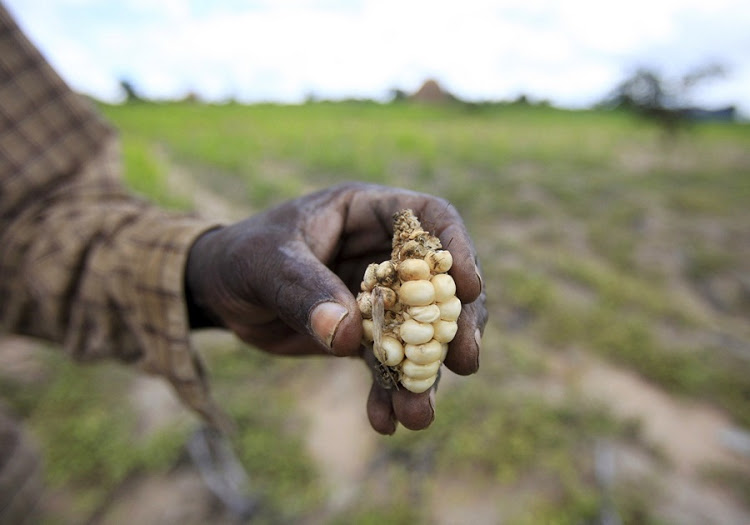
BY RUKUDZO MANGOMA
During my stint as a student at Great Zimbabwe University (GZU), the literature surrounding the subject of famine and food came easy to my understanding.
The formula we were taught was simple, “more food, less famine and less food, more famine”.
It worked well for a student who wanted to obtain a distinction and contributed to practitioners receiving awards, but this formula grossly misled people to take this human rights issue as a simple matter.
In fact the field of famine and food is so challenging that most practitioners simply recycle the little information found about this topic, most of it wrong anyway.
Beliefs were that famines reflected a shortage of food and that food production was measured in food grain.
With theories as wrong as this, it is no wonder why most of Africa is undernourished and hopes to find a solution seem deem.
Thus, I decided to dare walk in “no-man’s-land”, and uncover the myths surrounding famine and food.
- Chamisa under fire over US$120K donation
- Mavhunga puts DeMbare into Chibuku quarterfinals
- Pension funds bet on Cabora Bassa oilfields
- Councils defy govt fire tender directive
Keep Reading
Most false information are spread by professionals such as economists, agronomists and politicians who want to fulfil self interests.
It is their quest for significance and thirst for approval, combined with laziness that has led laymen astray.
The mess regarding this field of research is so mangled together, starting from the 1930’s, that is probably why solutions are hard to put forward.
For example, it was widely believed that more people would result in more erosion and ultimately famine, but this is not true.
A study at the University of Nairobi in 1990, showed that in areas such as Machakos district, a population of 240 000 in 1932 rose to 1 393 000 in 1987, resulting in less soil damage because of infrastructural investment, foreign currency inflows due to horticulture.
Thus, land became a important part in their lives and famine was controlled.
The notion that famine is a result of food shortage must not be viewed in this manner.
Famine, which is an extreme scarcity of food, is actually a result of being unable to command food or buy it.
Given the dire economic circumstances in Zimbabwe, famine is caused by a lack of purchasing power.
Zimbabweans either have no money to buy food or the value of their money reduces every day to buy enough food.
What should matter is not how much is being produced, but who can command (buy) it once it is produced.
The second misconception about food and famine is on the very definition of food production.
Most people believe food production is indicated by cereals.
Seed companies compete to see whose seed variety can achieve more yield per unit area for maize, rice and wheat.
This is true in Zimbabwe as seed companies focus on marketing of grain varieties and the bias of “command agriculture” towards cereals.
It is common sense that enough food has to be produced to meet human food requirements, but making production a single objective results in treating estimated grain production as total food production.
Grains like maize, wheat and rice may lack major nutrients found in sweet potatoes, bananas and broccoli.
According to author Irene Guijti: “The hidden harvest of wild foods is often another major source for the poor and as fall-back in times of shortage”.
So what solutions can be put forward to deal with the challenges brought about by the linkage between famine and food?
Honestly, I believe a solution cannot be found if we, development practitioners, do not clear up the mess we made surrounding information found on this topic.
Also given the complexity, diversity and dynamism of the topic largely due to population and climate change, one cannot put down one answer in hope that all will be well.
What might be needed is a cocktail of solutions given that we let it spiral out of control, throughout time.
The genesis of our exodus to finding answers is to acknowledge that false belief on the causes of famine and food were to a large extent caused by lack of “self-critical epidemiological awareness”.
This is a fancy way of saying researchers lack thoroughness and meticulousness in their discoveries.
So much we thought we still do not know, and have got wrong and what we need to know is constantly changing.
Development practitioners are pervasively ignorant, out of touch and out of date.
A time must come when they realise that poor and vulnerable people are not to blame for our problems.
The first step towards a panacea, is for development professionals to humble themselves and admit to failure. Gradually, I hope that for development practitioners to begin the quest to finding a solution to famine, they will see that the problem is more “us” than “them”.
Hence, with this first step, we will see the truth surrounding famine and food begin to emerge.
- Rukudzo Mangoma is a development studies graduate and writes in his personal capacity











